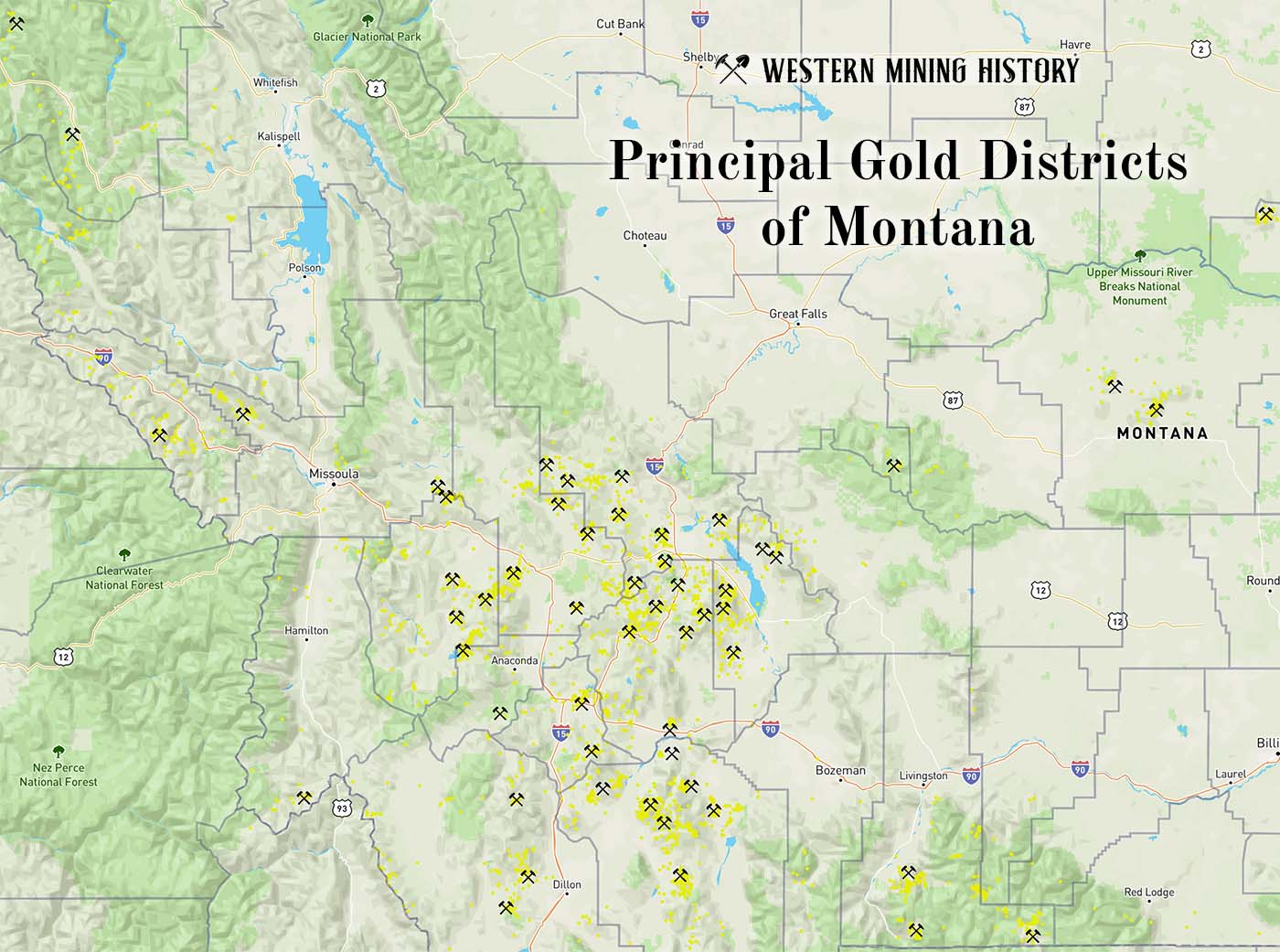The Spring Hill Mine is a gold mine located in Lewis and Clark county, Montana at an elevation of 4,701 feet.
About the MRDS Data:
All mine locations were obtained from the USGS Mineral Resources Data System. The locations and other information in this database have not been verified for accuracy. It should be assumed that all mines are on private property.
Mine Info
Elevation: 4,701 Feet (1,433 Meters)
Commodity: Gold
Lat, Long: 46.555, -112.09583
Map: View on Google Maps
Spring Hill Mine MRDS details
Site Name
Primary: Spring Hill Mine
Commodity
Primary: Gold
Secondary: Silver
Secondary: Lead
Secondary: Copper
Tertiary: Arsenic
Location
State: Montana
County: Lewis and Clark
District: Helena District
Land Status
Land ownership: National Forest
Note: the land ownership field only identifies whether the area the mine is in is generally on public lands like Forest Service or BLM land, or if it is in an area that is generally private property. It does not definitively identify property status, nor does it indicate claim status or whether an area is open to prospecting. Always respect private property.
Holdings
Not available
Workings
Type: Surface/Underground
Ownership
Owner Name: Montana Mines Corp.
Production
Not available
Deposit
Record Type: Site
Operation Category: Past Producer
Deposit Type: Contact Metasomatic
Operation Type: Unknown
Discovery Year: 1870
Years of Production:
Organization:
Significant: Y
Deposit Size: S
Physiography
General Physiographic Area: Rocky Mountain System
Physiographic Province: Northern Rocky Mountains
Mineral Deposit Model
Not available
Orebody
Not available
Structure
Not available
Alterations
Alteration Type: L
Alteration Text: Sericitation, Silicification, Chloritifaction, Carbonatization, Hydrothermal
Rocks
Name: Diorite
Role: Associated
Age Type: Associated Rock Unit
Age Young: Late Cretaceous
Name: Diorite
Role: Associated
Age Type: Associated Rock
Age Young: Late Cretaceous
Name: Diorite
Role: Associated
Age Type: Host Rock
Age Young: Late Cretaceous
Name: Diorite
Role: Associated
Age Type: Host Rock Unit
Age Young: Mississippian
Analytical Data
Analytical Data: FLOATION CONCENTRATE $100/TON AU.
Analytical Data: $7.35/TON 1929
Analytical Data: $2.50-16.00/TON AU (1900)
Materials
Ore: Galena
Ore: Gold
Ore: Pyrrhotite
Ore: Chalcopyrite
Gangue: Pyroxene
Gangue: Quartz
Gangue: Chlorite
Gangue: Garnet
Gangue: Pyrite
Gangue: Calcite
Gangue: Ankerite
Comments
Comment (Location): E SIDE OF GRIZZLY GULCH. ; INFO FROM LAND.ST :(1950)
Comment (Development): UNTIL 1929 A CYANIDE PLANT WAS USED, THEN FLOATATIONWAS USED.
Comment (Workings): PROPERTY EXTENDS 1.5 MILES ALONG THE STRIKE OF THE DEPOSIT AND COVERS 350 ACRES (PROBABLY NOT ALL OF THIS WORKABLE). MINE WORKINGS INCLUDE A LARGE PIT AND THREE ADIT LEVELS.
Comment (Geology): ORE BEARING MATERIAL LOCALLY CALLED PYROXINITE. NOTICABLE LACK OF OXIDATION IN CONTRAST TO OTHER LOCAL DEPOSITS. AWAY FROM THE CONTACT THE ORE MINERALS DECREASE RAPIDY AND BECOME BARREN.
References
Reference (Deposit): USGS BULL 527, P. 101.
Reference (Deposit): USGS BULL 842, P. 207-09.
Reference (Deposit): ECCONOMIC GEOLOGY VOL 24, NO 6, P. 544
Reference (Production): USGS BULL 842, P. 207
Principal Gold Districts of Montana

In Montana, 54 mining districts have each have produced more than 10,000 ounces of gold. The largest producers are Butte, Helena, Marysville, and Virginia City, each having produced more than one million ounces. Twenty seven other districts are each credited with between 100,000 and one million ounces of gold production. Read more: Principal Gold Districts of Montana.